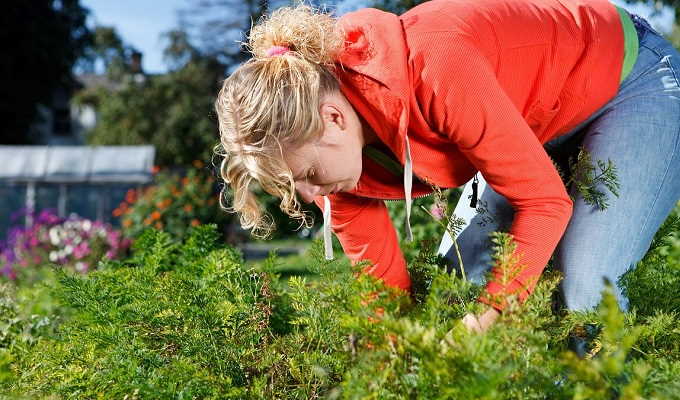Whenever they undertake a garden service, landscaping designers will follow several tried and trusted landscaping design principles that have proven time and again to produce the most effective results, aka stunning landscaped gardens. However, on occasion, a landscaping designer will be asked to adhere to additional garden design principles within a landscaping design, and one example of this is when an adaptive garden is required.
Before we go any further, we imagine many of you will not be familiar with the term adaptive gardening so we will explain it. An adaptive garden is created with the needs of those who have mobility problems in mind, which includes those who are wheelchair-bound, those with walking difficulties, those with joint pains, and the like. Often adaptive gardening is recommended for the elderly to reduce the risk of injuries when they are gardening.
In addition to an adaptive garden being created with the needs we have just outlined, it is also designed with potential future needs in the future in mind. This means they are designed specifically with a view to changes being possible within the garden and them being straightforward, rather than requiring a complete redesign. To paint a fuller picture of the benefits of adaptive gardening here are five ways in which it is helpful.
Safe And Comfortable Gardening: One of the principal benefits of an adaptive garden is it is safer for those who use it, and it is more comfortable for them too. Tasks that require a lot of effort will be limited, and the means of moving about the garden will be easier and safer due to the types of pathways and walkways which the landscaping design has included.
Stretches And Exercises Beforehand Limit The Risks Of Injuries And Strains: One of the ways you will be encouraged to ensure your gardening exploits are less stressful and painful is to do some stretching and light exercising if you can, before starting on the garden. These stretches could be the difference between your joints and muscles being ready for gardening and not, with the latter scenario a recipe for painful injuries, strains, and sprains.
It Changes As Your Body Changes: The term ‘adaptive’ is used for a reason given that the whole point is that your garden can be easily changed and adapted as your mobility potentially becomes more limited. These changes will have been pre-planned if your landscaping design team were asked to make your garden adaptive when they were designing it.
Encourages You To Think Of Ways To Make Your Garden Even More ‘User-Friendly’: Much of the positive feedback from those who have an adaptive garden is that it stimulates their minds into trying to think of what other ways they could make their garden even more suited to their needs. This can range from including new features, such as additional seating, to the types of plants that are grown, given that some need less maintenance than others.
Ergonomic Tool Use Limits Strains And Are More Comfortable: The final benefit of an adaptive garden is that if planned properly, all the tools and equipment you might need to use to maintain it will either be ergonomic to start with or adapted to suit your needs. Often a simple tweak to them is all that is needed and this may even be possible without the need to buy new tools, thus saving you money.
